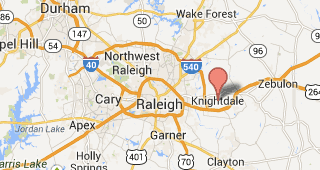Avoiding Judgment Liens with Bankruptcy
In an earlier post, we discussed the treatment of judgments in bankruptcy. This post is a continuation, focusing on what happens to judgment liens in bankruptcy.
A judgment is effective as a lien against all of the judgment debtor's real property in the county of the judgment or any other county where the judgment has been transcribed into the official records. This judgment lien or judicial lien is effective both with respect to property owned at the time of the judgment, as well as property acquired after the judgment. A bankruptcy discharge will void the future application of a judgment, preventing it from attaching to property acquired after bankruptcy. However, a discharge does not itself get rid of an existing judgment lien.
A bankruptcy discharge operates to end personal liability for debts, but does not end creditor's rights in property as collateral. The judgment lien is such an interest, in some ways similar to a voluntary mortgage on a home. A creditor with a surviving judgment lien could seek to foreclose the property after bankruptcy.
The primary method debtors use to attack a judgment lien is via a motion to avoid as a lien impairing exemptions, under section 522(f)(1)(A) of the bankruptcy code. A judgment lien may either be completely avoided or partially avoided, in which case the amount of the lien is reduced. In short, one adds up the possible exemption amount, the judicial liens, and all other liens. This sum is compared to the value of the property. If it is greater than the value, the judicial lien impairs the exemption and may be partial or completely avoided. If the sum is less than the value, there is no impairment of the exemption and section 522 does not provide a means to avoid the judgment lien. Accordingly, the effectiveness of this procedure depends on: (i) the availability of an exemption, (ii) other mortgages and liens on the property, and (iii) the value of the property.
A motion under section 522(f) requires considering whether the debtor could have exempted some or all of the value of the property, had there not been a judgment lien present. Frequently, a debtor can use either a homestead exemption or a wild card exemption to keep real property, or the value of real property, through a bankruptcy. There need not be the entire exemption available to the debtor, but some exemption must apply in order to use section 522(f).
The total liens on the property control the net value available to the debtor. All liens are considered, including mortgages, home equity lines of credit, tax liens, judgment liens, contractor's liens, and other encumbrances. The total liens may be more or less than the property is worth. Both the property value and the claimed amount of the liens must be determined and potentially proven in court by the debtor.
Whether a judgment lien is completely avoided or partially avoided depends on the extent of impairment. If the sum of liens and exemption, discussed above, minus the property value, is greater than the lien, then the lien may be completely avoided. Stated another way, if the value of the property is less than the amount of the exemption added to the other liens, the judicial lien may be completely avoided. A few hypothetical examples follow to illustrate how this works.
Example 1: No avoidance
Single debtor own a primary residence worth $100,000. On this house, there is a mortgage in the amount of $30,000 and a home equity line of credit in the amount of $15,000. A credit card issuer has a judgment lien in the amount of $10,000. The North Carolina homestead exemption of $35,000 applies. The total of the exemption and liens is $90,000, which is less than the value of the home. The judgment lien does not impair the exemption, and the lien cannot be avoided via section 522(f)(1)(A).
Example 2: Complete avoidance
Single debtor own a primary residence worth $100,000. On this house, there is a mortgage in the amount of $90,000 and a home equity line of credit in the amount of $15,000. A credit card issuer has a judgment lien in the amount of $10,000. The North Carolina homestead exemption of $35,000 applies. The total of the exemption and liens is $150,000, which is greater than the value of the home. The total extent of impairment is $50,000, which is greater than the amount of the judgment lien. Therefore, the judgment lien can be completely avoided via section 522(f)(1)(A).
Example 3: Partial avoidance--home
Single debtor own a primary residence worth $100,000. On this house, there is a mortgage in the amount of $46,000 and a home equity line of credit in the amount of $15,000. A credit card issuer has a judgment lien in the amount of $10,000. The North Carolina homestead exemption of $35,000 applies. The total of the exemption and liens is $106,000, which is greater than the value of the home. The total extent of impairment is $6,000, which is less than the amount of the judgment lien. Therefore, the judgment lien can be partially avoided to the extent of $6,000 via section 522(f)(1)(A), leaving a lien in the amount of $4,000.
Example 4: Partial avoidance--land
Single debtor own a parcel of land worth $50,000. A mortgage of $30,000 is associated with the land. A credit card issuer has a judgment lien in the amount of $85,000. The only exemption which applies is the North Carolina wild card exemption of $5,000. The total of the exemption and liens is $120,000, which is greater than the value of the land. The total extent of impairment is $70,000, which is less than the amount of the judgment lien. Therefore, the judgment lien can be partially avoided to the extent of $70,000 via section 522(f)(1)(A), leaving a lien in the amount of $15,000.
Lien avoidance under section 522(f)(1) can also apply to situations where there are multiple judgment liens. Lien avoidance can also work when the judgment lien is the only lien of any kind on the property, although the value of the property compared to the exemption becomes very important.
- Log in to post comments



